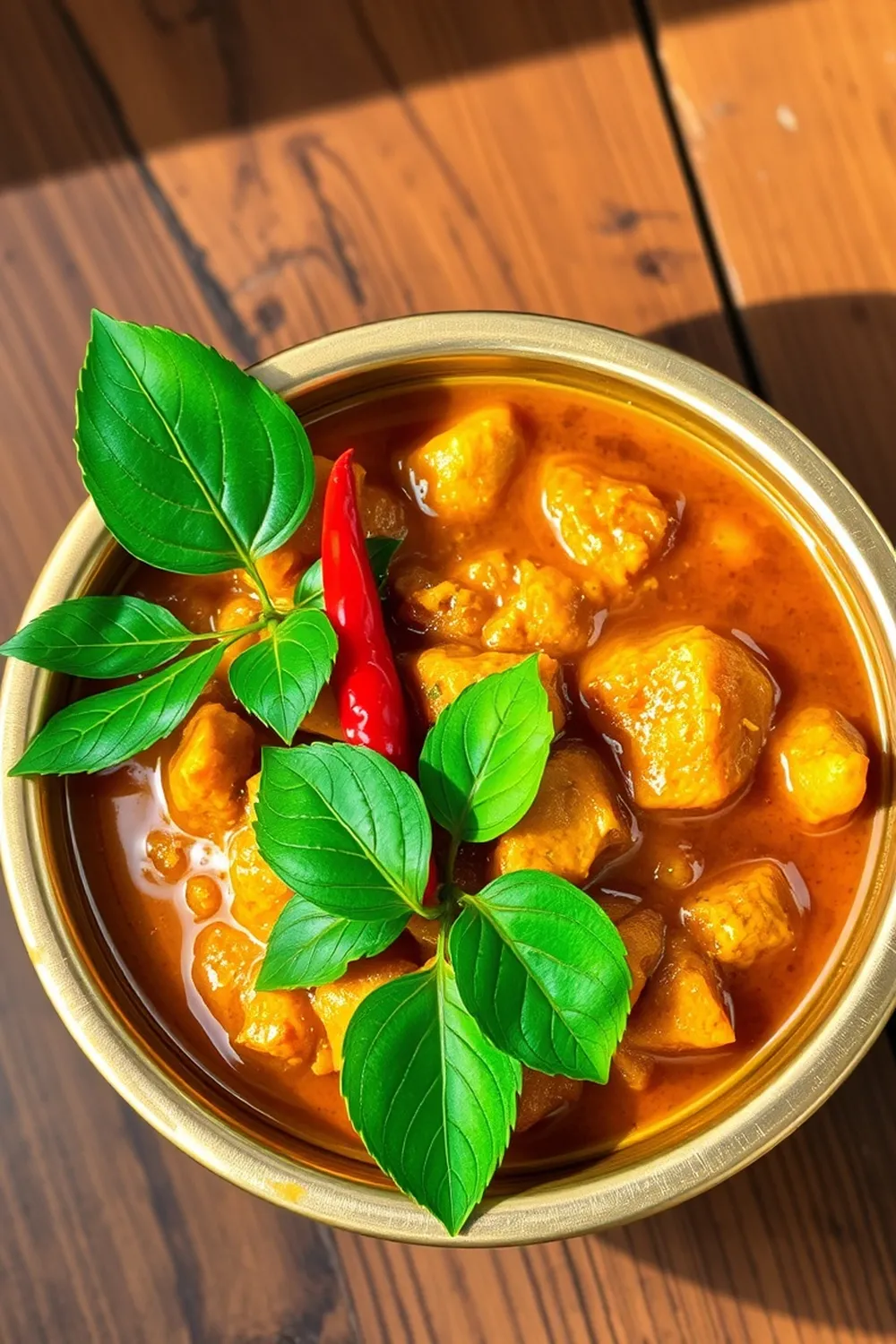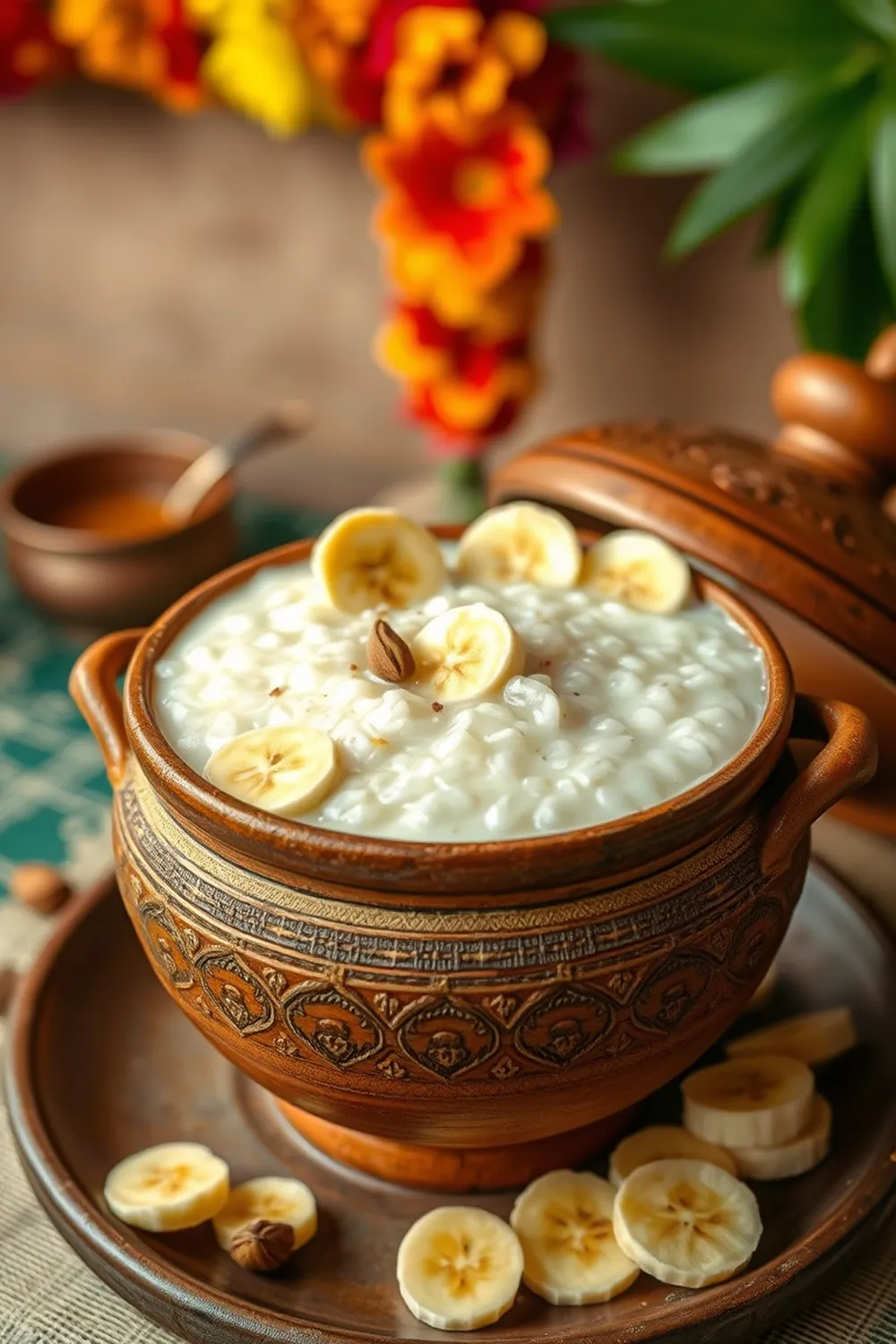- Soak tamarind in 1/2 cup warm water, extract juice, and discard solids.
- Peel and finely grate or mince ginger using a grater.
- Heat 3 tsp oil in a pan. Fry ginger, green chilies, and 2 sprigs curry leaves on low heat for 2-3 minutes until fragrant.
- Dissolve jaggery in 1/4 cup water, strain, and set aside.
- Heat remaining oil. Temper mustard seeds, red chilies, and remaining curry leaves. Add chili powder, fenugreek, and turmeric. Stir for 30 seconds.
- Add tamarind juice, jaggery water, salt, and 1/2 cup water. Bring to a boil.
- Mix in fried ginger. Simmer for 10-15 minutes until thick and glossy. Adjust consistency as needed (it thickens upon cooling).
- Calories:45 kcal25%
- Energy:188 kJ22%
- Protein:0.5 g28%
- Carbohydrates:7 mg40%
- Sugar:4 mg8%
- Salt:300 g25%
- Fat:2 g20%
Last Updated on 5 months ago by Neha Deshmukh
Ginger Curry Recipe – Authentic South Indian Ginger Pickle Recipe
Hey everyone! If you’ve ever been to South India, you’ve probably encountered the magic of ginger curry – a sweet, tangy, and slightly spicy condiment that’s seriously addictive. It’s more than just a pickle; it’s a flavour bomb that elevates everything from rice and dosas to idlis and even a simple roti. I first made this when I was trying to recreate the flavours of my grandmother’s kitchen, and honestly, it took a few tries to get it just right! But trust me, the effort is SO worth it. Let’s dive in!
Why You’ll Love This Recipe
This ginger curry isn’t just delicious, it’s also surprisingly versatile. It’s a fantastic way to add a burst of flavour to your meals, and it’s a wonderful digestive aid too. Plus, it keeps well, so you can make a batch and enjoy it for days. It’s a little bit of sunshine in a jar, honestly! This recipe aims to capture the authentic South Indian flavours, passed down through generations.
Ingredients
Here’s what you’ll need to make this amazing ginger curry:
- 2 cups ginger, peeled and finely grated (about 200g)
- 4 teaspoons gingelly oil (also known as sesame oil)
- 1 green chili (Serrano pepper), finely chopped
- 3 teaspoons jaggery (about 45g)
- 2.5 teaspoons chili powder (adjust to your spice preference)
- 0.5 teaspoon turmeric powder
- 0.25 teaspoon fenugreek powder
- Key lime sized piece of tamarind
- 2.5 teaspoons salt (or to taste)
- 2.5 sprigs curry leaves
- 0.5 teaspoon mustard seeds
- 2 red chilies, broken into pieces
- 1.25 cups water (about 300ml)
Ingredient Notes
Let’s talk about a few key ingredients to make sure you get the best results:
- Gingelly Oil: This is the traditional oil for South Indian cooking. It has a nutty, aromatic flavour that’s essential for this recipe. You can find it at most Indian grocery stores. If you absolutely can’t find it, neutral oil like sunflower oil can be used as a substitute, but the flavour won’t be quite the same.
- Tamarind: Tamarind provides that signature tangy flavour. You can use tamarind pulp or concentrate, but I prefer using the block and extracting the juice myself – it just tastes fresher.
- Jaggery: Jaggery is unrefined cane sugar, and it adds a lovely caramel-like sweetness. It’s different from regular sugar, so don’t substitute it if you can help it! You can find it in Indian grocery stores.
- Curry Leaves: These fragrant leaves are a staple in South Indian cuisine. They add a unique aroma and flavour. Fresh curry leaves are best, but you can sometimes find them frozen. Don’t skip these! They really make the dish.
Step-By-Step Instructions
Alright, let’s get cooking!
- First, soak the tamarind in ½ cup of warm water. Let it sit for about 15-20 minutes, then squeeze out all the juice, discarding the solids.
- Peel and finely grate the ginger. A food processor makes this much easier, but a regular grater works too! You want about 2 cups of grated ginger.
- Heat 3 teaspoons of gingelly oil in a pan over low heat. Add the grated ginger, chopped green chili, and 2 sprigs of curry leaves. Fry for about 15 minutes, stirring frequently, until the ginger turns golden brown. This slow frying is key to developing the flavour.
- In a separate small saucepan, dissolve the jaggery in ½ cup of water. Strain the jaggery water to remove any impurities and set aside.
- Heat the remaining oil in the same pan. Add the mustard seeds and let them splutter. Then, add the broken red chilies and the remaining curry leaves. Fry for a few seconds, then add the chili powder, fenugreek powder, and turmeric powder. Stir for about a minute until fragrant.
- Pour in the tamarind juice, jaggery water, salt, and ½ cup of water. Bring the mixture to a boil, then reduce the heat and simmer.
- Add the fried ginger to the simmering sauce. Continue to simmer for about 16 minutes, stirring occasionally, until the curry thickens and becomes glossy. Remember, it will thicken even more as it cools, so don’t overcook it! Adjust the consistency with a little extra water if needed.
Expert Tips
- Don’t rush the ginger frying process! Low and slow is the way to go.
- Taste and adjust the salt and spice levels as you go. Everyone’s preference is different.
- Keep stirring to prevent the curry from sticking to the bottom of the pan.
Variations
- Vegan Adaptation: This recipe is naturally vegan!
- Spice Level Adjustment: If you prefer a milder curry, reduce the amount of chili powder. For a spicier kick, add a pinch of cayenne pepper. My friend, Priya, loves to add a finely chopped bird’s eye chili for extra heat!
- Festival Adaptations: This ginger curry is often made during Makar Sankranti and Pongal festivals in South India. It’s considered an auspicious dish.
Serving Suggestions
This ginger curry is incredibly versatile! Here are a few ideas:
- Serve it with hot steamed rice.
- Enjoy it with idli, dosa, or vada.
- Spread it on roti or paratha.
- It’s also delicious with yogurt rice!
Storage Instructions
Let the ginger curry cool completely before storing it in an airtight container in the refrigerator. It will keep for up to a week, but honestly, it rarely lasts that long in my house!
FAQs
Q: What type of ginger is best for this recipe?
A: Young ginger is ideal, as it’s less fibrous and has a milder flavour. However, mature ginger works just fine too – just make sure to grate it finely.
Q: Can I use lemon juice instead of tamarind?
A: While you can use lemon juice, it won’t give you the same authentic tangy flavour. Tamarind is really key to this recipe.
Q: How long does this ginger curry last?
A: Properly stored in an airtight container in the refrigerator, it should last for up to a week.
Q: What is gingelly oil and where can I find it?
A: Gingelly oil (also known as sesame oil) is a traditional South Indian cooking oil with a nutty flavour. You can find it at most Indian grocery stores.
Q: Can I adjust the sweetness level of the curry?
A: Absolutely! Adjust the amount of jaggery to your liking. Start with the recommended amount and add more if you prefer a sweeter curry.
Enjoy making this delicious and authentic South Indian ginger curry! I hope it brings a little bit of South Indian sunshine to your kitchen. Let me know how it turns out in the comments below!










